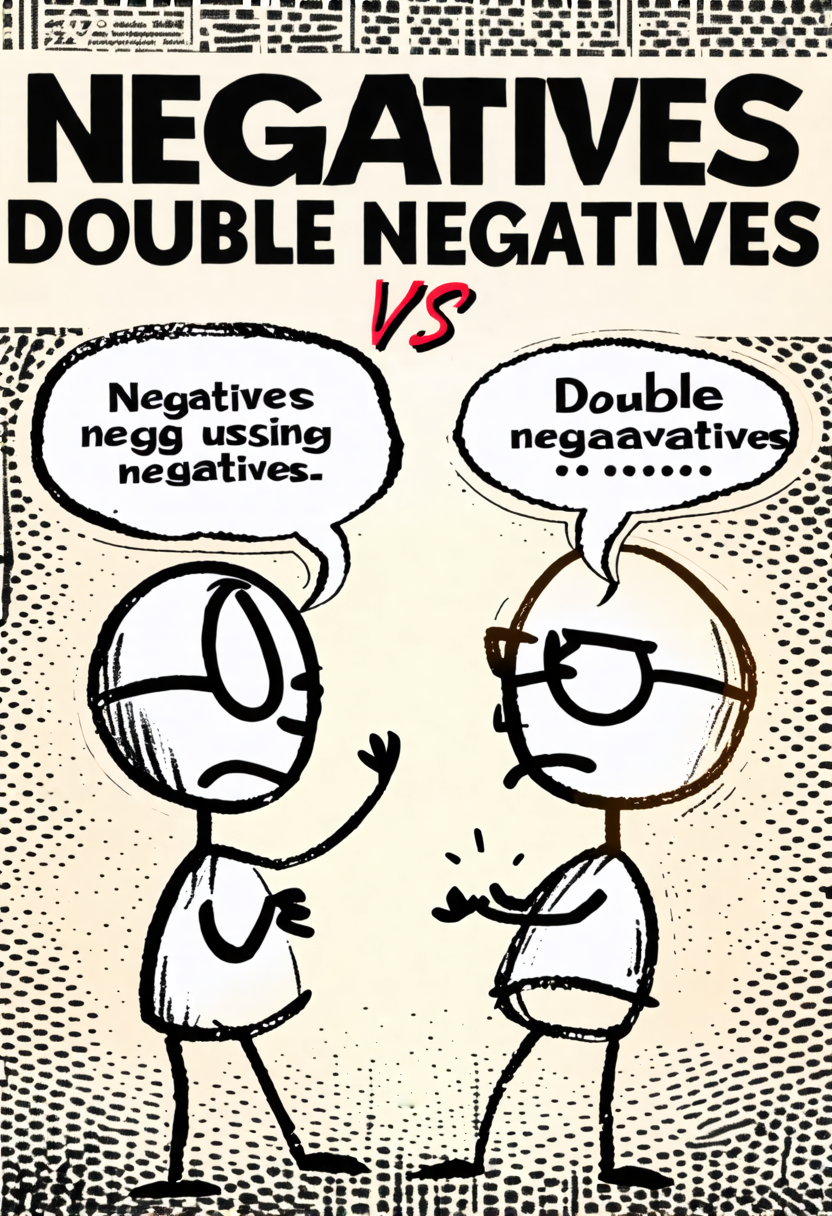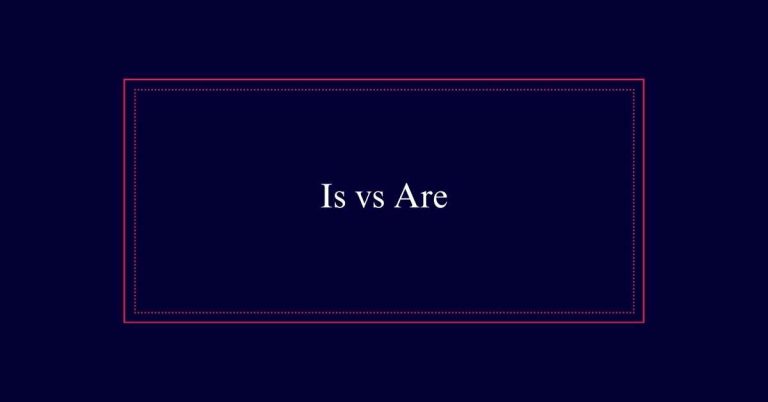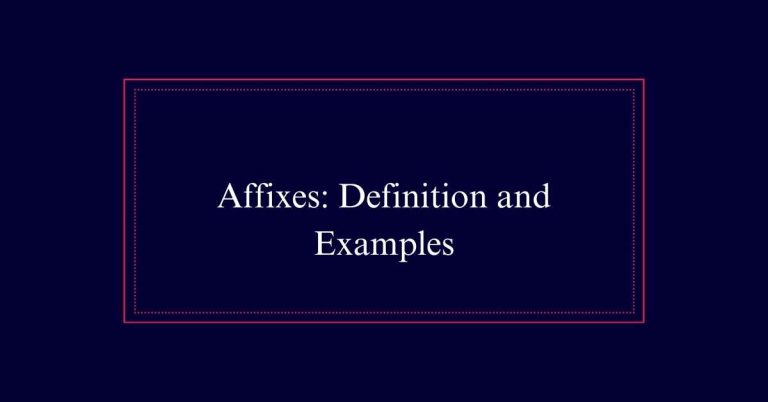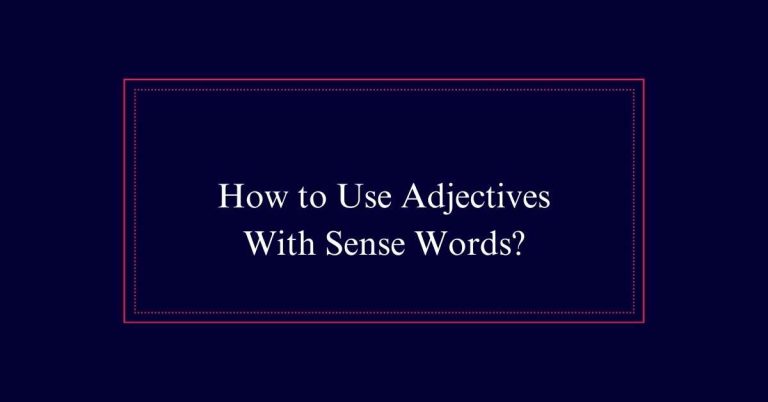Negatives vs. double negatives
Negatives modify statements to convey the opposite meaning, often using ‘not’ before verbs, adjectives, or adverbs. For instance, ‘She is not coming.’ Double negatives, like ‘She isn’t not coming,’ combine two negatives, creating confusion or reinforcement, depending on the context. Correct placement of negatives, such as using auxiliary verbs accurately (‘isn’t’ for ‘is not’), is vital for clarity. Negative correlatives like ‘neither/nor’ connect multiple negative elements smoothly, as in ‘Neither John nor Mary is available.’
Understanding Negation
Negation in grammar is the process of making a statement false by adding a negative word. It nullifies or shows sentences to be untrue. The most common negative adverb is ‘not.’ Adding ‘not’ changes the meaning of a sentence to its opposite.
‘Not’ is placed before verbs, adjectives, and adverbs to negate them. Special rules apply to the placement of ‘not’ with linking verbs, auxiliary verbs, and modal verbs. Negative words come before the words they negate. Different types of negatives are used for verbs, adjectives, adverbs, and nouns.
Contractions like ‘didn’t’ are common in spoken English. In questions, ‘not’ comes before the subject and the main verb.
The Role of ‘Not’
The word ‘crucial’ plays an important role in forming negative sentences in English. It is the primary negative adverb used to nullify statements and convey the opposite meaning.
When added to a sentence, ‘not’ changes its truth value. For example, ‘She is happy’ becomes ‘She is not happy.’ It is commonly used with auxiliary verbs like ‘is,’ ‘are,’ ‘have,’ ‘will,’ and ‘can.’
Additionally, ‘not’ is essential in creating contractions such as ‘isn’t,’ ‘aren’t,’ and ‘can’t.’ These contractions are frequently used in spoken English for convenience.
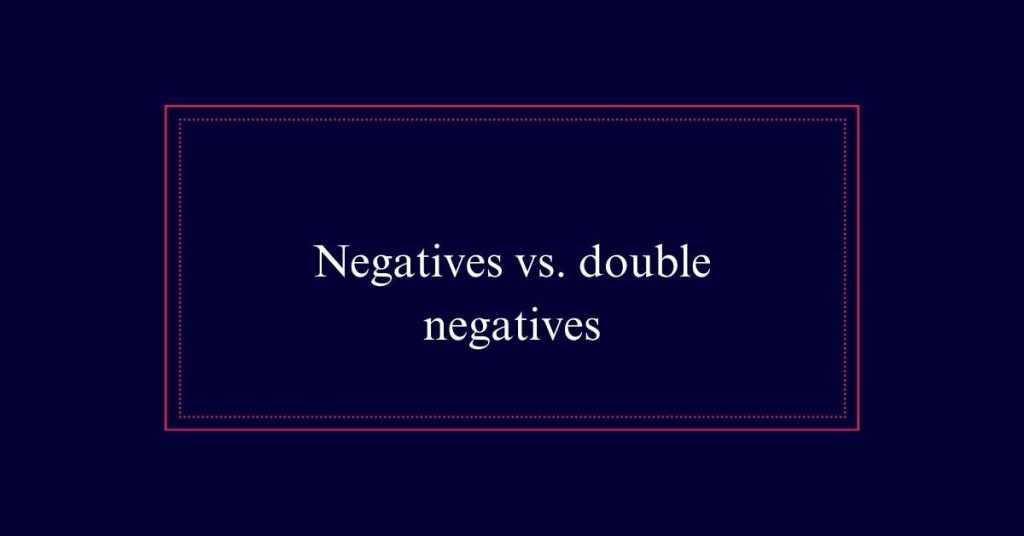
Placement of Negatives
Understanding where to place negative words in a sentence is key to accurately conveying the intended meaning. Negatives generally come before the word they modify. This placement changes depending on the verb type—auxiliary, action, or modal. For example, with auxiliary verbs, ‘not’ follows the auxiliary verb. In sentences with main verbs, ‘not’ precedes the main verb. Contractions like ‘didn’t’ also follow this rule. Placing negatives correctly guarantees clarity and prevents misunderstandings.
| Verb Type | Example Sentence |
|---|---|
| Auxiliary Verb | She has not arrived. |
| Action Verb | They do not like spinach. |
| Modal Verb | He cannot swim. |
| Contraction | I didn’t see the movie. |
Negative Correlatives
Negative correlatives, such as ‘neither/nor,’ connect two or more negative elements without repeating ‘not.’ They are used to link multiple parts of a sentence in a negative context.
For example, ‘Neither the manager nor the employees were available’ shows that both subjects are unavailable. This structure helps maintain parallelism, ensuring that the connected elements are grammatically equal. ‘Neither/nor’ can link various parts of speech, including nouns, verbs, adjectives, and adverbs.
When used as the subject, ‘neither/nor’ follows specific subject-verb agreement rules. These rules are essential for ensuring that the sentence is grammatically correct and clear. Understanding negative correlatives helps in constructing clear, concise, and effective negative statements.
Using ‘Neither/Nor’
Mastering the use of ‘neither/nor’ is crucial to constructing clear and grammatically correct negative sentences. ‘Neither’ and ‘nor’ are used together to connect two or more negative alternatives. This conjunction pair guarantees that both options presented are negated.
For example, ‘Neither John nor Mary attended the meeting’ means that both John and Mary did not attend. It is essential to maintain parallel structure when using ‘neither/nor’ with different parts of speech, ensuring consistency in the sentence. Additionally, subject-verb agreement must be respected; the verb should match the subject closest to it.
‘Neither’ as a Determiner
‘Neither’ functions as a determiner when it precedes a noun to indicate that none of the available options are applicable. For example, in the sentence ‘Neither option is suitable,’ ‘neither’ clarifies that both choices are unsuitable.
It is used in negative contexts to exclude all listed items or possibilities. This usage guarantees clarity by specifying that not even one of the mentioned nouns is relevant or acceptable.
As a determiner, ‘neither’ can be particularly useful in situations where choices must be explicitly dismissed. By employing ‘neither’ in this manner, speakers and writers can effectively communicate the complete negation of all options, enhancing the precision and accuracy of their statements.
‘Neither’ as an Adverb
In addition to its role as a determiner, ‘neither’ can also function as an adverb to emphasize that a negative statement applies to another subject or action.
For example, in the sentence ‘She didn’t go to the party, and neither did he,’ ‘neither’ is used to show that the negative action (not going to the party) applies to both subjects. This usage helps to connect negative statements smoothly without redundancy.
It is important to note that ‘neither’ should always be paired with a negative clause. By using ‘neither’ as an adverb, one can avoid repetitive phrasing and maintain clarity in communication. This ensures that the conveyed meaning is both precise and efficient.
‘Neither’ as a Pronoun
As a pronoun, ‘neither’ effectively replaces previously mentioned nouns to indicate that none of the options apply. It is used to show that two or more items are not chosen. For example, in the sentence ‘Neither was suitable,’ ‘neither’ stands in for the previously mentioned options, indicating both are unsuitable.
Here is a comparison to illustrate the use of ‘neither’ as a pronoun:
| Example Sentence | Explanation |
|---|---|
| ‘Neither works.’ | Both options do not work. |
| ‘Neither is available.’ | Both items are unavailable. |
| ‘Neither is correct.’ | Both answers are incorrect. |
| ‘Neither agreed.’ | Both parties did not agree. |
Avoiding Double Negatives
Avoiding double negatives is crucial for clear and accurate communication in English. Double negatives occur when two negative words are used in the same clause, creating confusion and often resulting in a positive meaning.
For example, ‘I don’t need no help’ should be ‘I don’t need any help.’ The incorrect version suggests needing help due to the double negative. To maintain clarity, use a single negative word. Instead of ‘She isn’t never late,’ say ‘She is never late.’ This guarantees the sentence is easy to understand.
Properly using negatives enhances readability and prevents misunderstandings. Keeping sentences straightforward and unambiguous is key to effective communication.
Common Mistakes With Negatives
While understanding the importance of avoiding double negatives, it is also essential to recognize common mistakes with negatives that can disrupt clarity in communication. Misusing negatives can lead to confusion and misinterpretation.
Here are some frequent errors to watch out for:
- Double Negatives: Using two negatives in a sentence unintentionally reverses the meaning.
- Negating with ‘Barely’ or ‘Hardly’: These words are already negative and do not need an additional negative.
- Incorrect Placement of ‘Not’: Misplacing ‘not’ can change the sentence’s intended meaning.
- Ambiguous Negation: Vague negation can leave the reader unsure of the sentence’s true meaning.
- Negatives with Positive Correlatives: Using negatives with words like ‘either’ instead of ‘neither’ can cause confusion.
